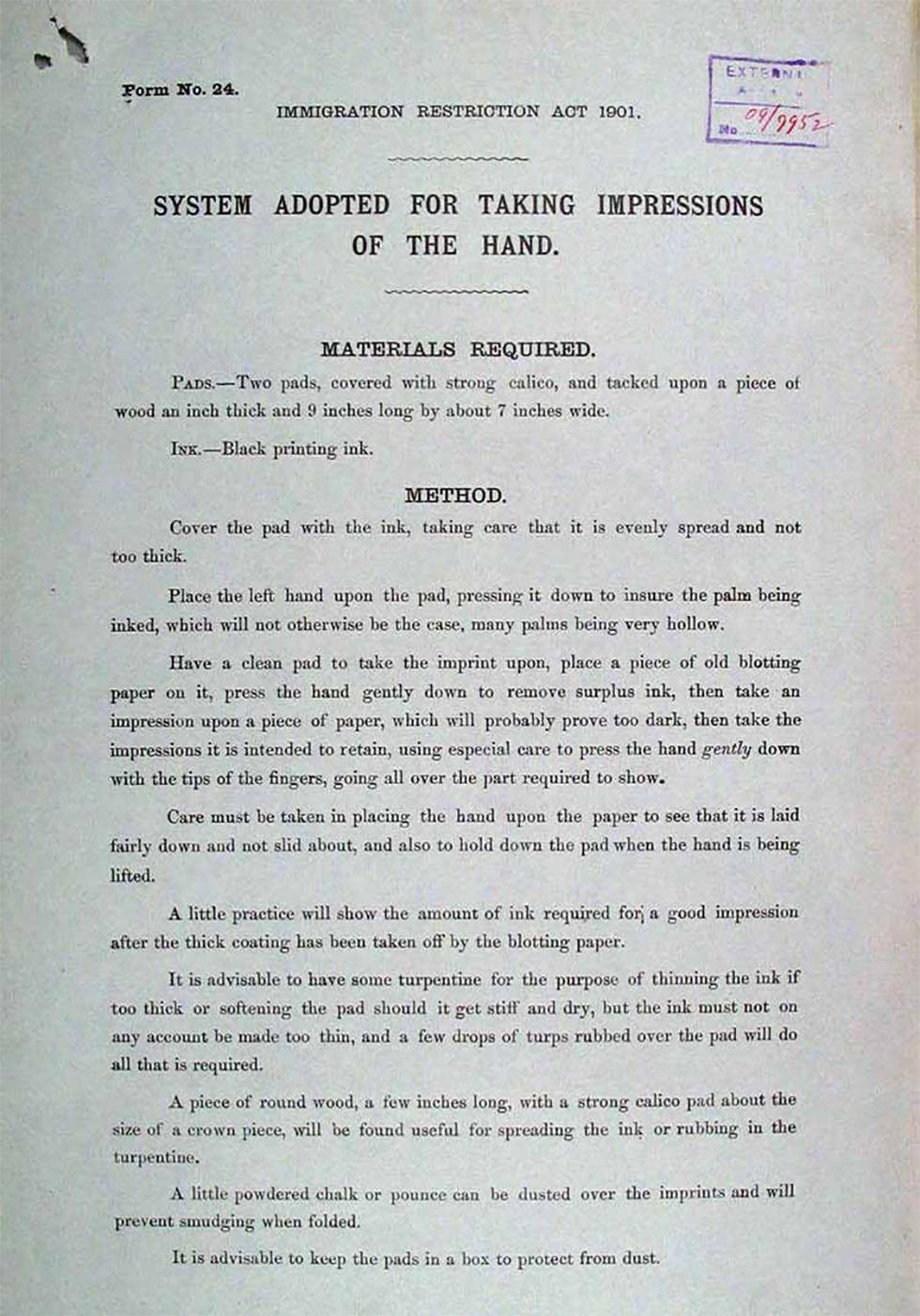
Circular describing a method used to take hand impressions for migration records.
Aboriginal and Torres Strait Islander people should be aware that the National Archives' website and collection contain the names, images and voices of people who have died.
Some records include terms and views that are not appropriate today. They reflect the period in which they were created and are not the views of the National Archives.


Circular describing a method used to take hand impressions for migration records.
Form No 24
IMMIGRATION RESTRICTION ACT 1901.
[Stamped in purple ink 'EXTERNAL AFFAIRS', with reference number '09/9952' handwritten inside stamp in red ink.]
[Heading:] SYSTEM ADOPTED FOR TAKING IMPRESSIONS OF THE HAND.
[Subheading:] MATERIALS REQUIRED.
PADS. – Two pads, covered with strong calico, and tacked upon a piece of wood an inch thick and 9 inches long by about 7 inches wide.
INK. – Black printing ink.
[Subheading:] METHOD.
Cover the pad with the ink, taking care that it is evenly spread and not too thick.
Place the left hand upon the pad, pressing it down to insure the palm being inked, which will not otherwise be the case, many palms being very hollow.
Have a clean pad to take the imprint upon, place a piece of old blotting paper on it, press the hand gently down to remove surplus ink, then take an impression upon a piece of paper, which will probably prove too dark, then take the impression it is intended to retain, using especial care to press the hand gently down with the tips of the fingers, going all over the part required to show.
Care must be taken in placing the hand upon the paper to see that it is laid fairly down and not slid about, and also to hold down the pad when the hand is being lifted.
A little practice will show the amount of ink required for a good impression after the thick coating has been taken off by the blotting paper.
It is advisable to have some turpentine for the purpose of thinning the ink if too thick or softening the pad should it get stiff and dry, but the ink must not on any account be made too thin, and a few drops of turps rubbed over the pad will do all that is required.
A piece of round wood, a few inches long, with a strong calico pad about the size of a crown piece, will be found useful for spreading the ink or rubbing in the turpentine.
A little powdered chalk or pounce can be dusted over the imprints and will prevent smudging when folded.
It is advisable to keep the pads in a box to protect from dust.
Learn how to interpret primary sources, use our collection and more.
